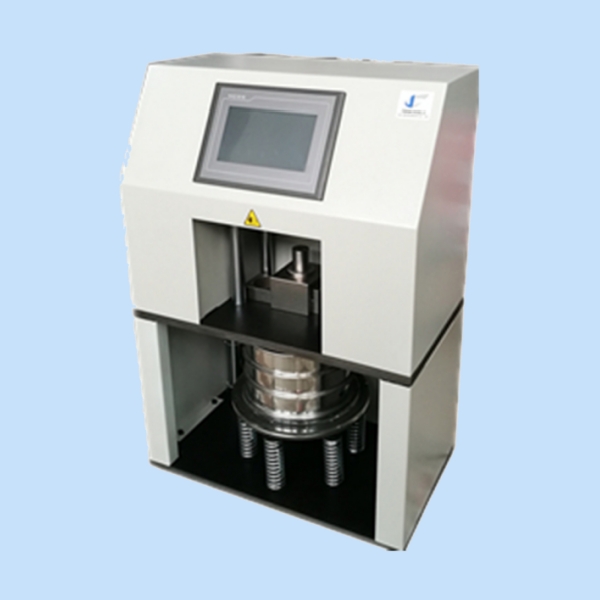ISO 719
Glass Grain Test Method
Understanding the chemical durability of glass used in medical and pharmaceutical packaging is critical to product safety and regulatory compliance. One of the key international standards addressing this is ISO 719, which outlines a method to evaluate the hydrolytic resistance of glass grains at 98°C. This standard is especially relevant for soda-lime glass, a common material in primary packaging.
What is ISO 719?
ISO 719:2020 is the international standard titled “Glass — Hydrolytic resistance of glass grains at 98 °C — Method of test and classification.” It defines a procedure for testing how resistant glass grains are to water at elevated temperatures. The test measures the volume of acid needed to neutralize alkali extracted from a specific mass of glass. Results can be reported either by acid volume or equivalent sodium oxide content, providing a quantifiable basis for classification.
This standard is particularly designed for less resistant glass types, such as soda-lime glass, unlike ISO 720, which targets borosilicate and other more chemically stable glasses.
Hydrolytic Resistance Test for Glass: Why It Matters
Ο hydrolytic resistance test for glass determines how much alkaline material leaches into water when the glass is exposed to high temperatures. This data is essential for:
- Ensuring chemical stability of pharmaceutical containers like ampoules, vials, and oral bottles.
- Preventing product degradation caused by interaction between packaging and medication.
- Classifying glass types based on durability and selecting appropriate packaging materials.
A poor hydrolytic resistance rating can indicate a risk of alkali leaching, which may compromise the contents’ shelf life or safety.
Glass Grain Test Procedure Based on ISO 719
Προετοιμασία δείγματος
- Crushing: Glass articles (annealed) are manually or mechanically crushed into grains.
- Κοσκίνισμα: Grains are separated using sieves of 710 µm, 500 µm, and 300 µm. Only grains passing through 500 µm but retained on 300 µm are used.
- Cleaning: Grains are washed with acetone and cleaned in an ultrasonic bath. They are then dried at 140°C.
Διαδικασία δοκιμής
- Weighing: 2 g of clean, dry grains are weighed into each of three volumetric flasks.
- Extraction: The flasks are filled with grade 2 water and heated in a bath to 98°C for 60 minutes.
- Titration: After cooling, a portion of the supernatant liquid is titrated using methyl red as an indicator to determine the amount of alkali released.
Classification
Based on the volume of titrant used, the glass is classified into hydrolytic resistance classes. Higher volumes indicate greater alkali release, suggesting lower hydrolytic resistance.
Instrument Spotlight: GHR-01A by Cell Instruments
To streamline the ISO 719 testing process and reduce manual workload, Cell Instruments offers the GHR-01A Δοκιμαστής υδρολυτικής αντίστασης κόκκων γυαλιού. It automates the crushing and vibratory sieving process, ensuring repeatable and accurate sample preparation.
Βασικά Χαρακτηριστικά:
- Automated Crushing and Sieving: Ensures sample uniformity and compliance with ISO standards.
- HMI Touch Interface: Enhances user control and ease of operation.
- Χαρακτηριστικά Ασφαλείας: Glass splatter shields and waste collection systems improve lab safety and cleanliness.
- Precision and Efficiency: Automated sieving provides more consistent test samples and minimizes human error.
The GHR-01A is highly recommended for laboratories and pharmaceutical companies looking to comply with ISO 719 and streamline quality control processes.
Contact Us Get ISO 719 Testing Solution
ISO 719 plays a crucial role in qualifying and classifying glass materials used in pharmaceutical packaging. By following this standard’s procedures, manufacturers and laboratories can accurately assess hydrolytic resistance, improve quality assurance, and ensure regulatory compliance. With instruments like Cell Instruments’ GHR-01A, the testing process becomes more efficient, safer, and reliable—empowering your lab to maintain the highest standards in product safety and performance.
Συχνές ερωτήσεις
ISO 719 is used to evaluate the hydrolytic resistance of glass grains at 98°C, helping classify the chemical durability of glass types, especially soda-lime glass.
The standard applies to less chemically resistant glasses, primarily soda-lime glass. More resistant types like borosilicate glass should be tested using ISO 720.
At least 2 grams of grains per test are needed, with grain sizes between 300 µm and 500 µm.
The GHR-01A automates crushing and sieving processes, improves precision, reduces manual errors, and enhances lab safety and efficiency.
High resistance means low alkali leaching, indicating that the glass is chemically stable and suitable for pharmaceutical applications.


